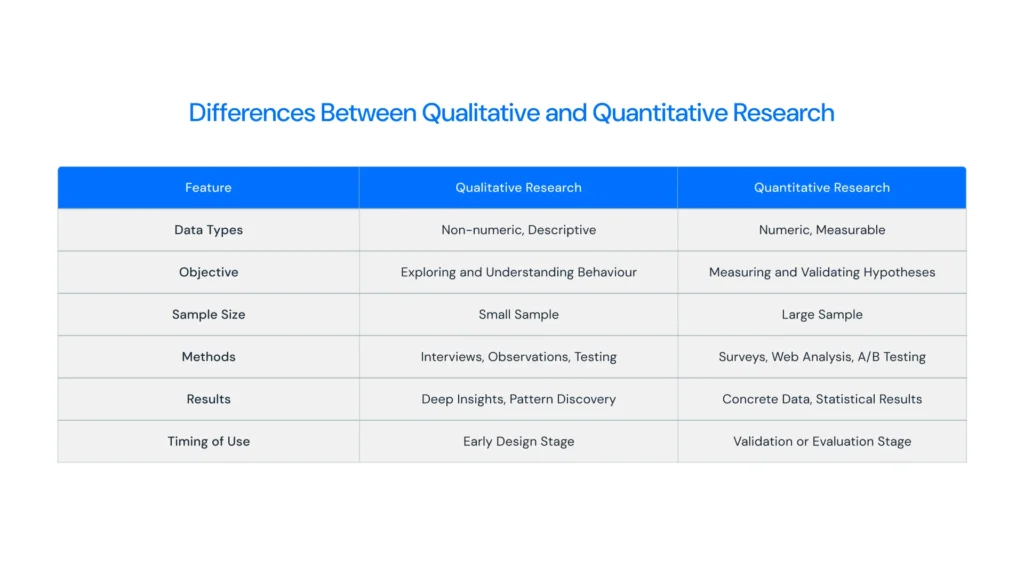Research is a fundamental part of UX desig UX design, because it helps us to better understand users and make informed decisions. But beware: not all research is the same. There are different approaches and one of the most common (and eternal) debates is that of research. qualitative vs. quantitative. Each has its strengths, limitations and perfect timing within the design process.
Índice de contenidos
ToggleToday we tell you how they differ, when it is convenient to use one or the other and we also give you examples and specific techniques of each type so that you can be inspired and choose wisely.
What is qualitative research in UX design?
Qualitative research is focused on understanding why of the user’s behavior. It’s like going into emotional detective mode: it’s about discovering the motivations, emotions, perceptions and contexts behind what the user does.
These are some common qualitative research techniques:
- In-depth interviews
- Contextual observation (shadowing)
- Usability testing
- Focus groups
- Empathy maps
- Diary studies (user diaries)
- Card sorting
It is mainly used in the early stages of design, when we want to empathize, discover real needs or redefine problems.
What is quantitative research in UX design?
Here the approach is more analytical and numerical. We seek to measure behaviors, validate hypotheses and find patterns with concrete data. Not so much “what they feel”, but “how many do what”.
Some common quantitative research methods are:
- Structured surveys (Likert-type, rankings, multiple choice)
- A/B Testing
- Heat maps (heatmaps)
- Analysis of funnels (conversion funnels)
- Usage metrics (Google Analytics, Mixpanel…)
- System Usability Scale (SUS)
- Net Promoter Score (NPS)
They are ideal in more advanced phases, to validate ideas or measure results after launching a design.

Quantitative research design
Let us now look at an example of quantitative research design in the UX context.
📌 Example 1: Satisfaction Survey
A company launches an online survey of 500 users to measure overall satisfaction with a mobile app. The questions are structured with Likert scales (from 1 to 5), and the results are statistically analyzed to identify weaknesses in the experience.
📌 Example 2: A/B Test
A new button design is tested on a product page. Group A sees the current design, and group B sees a new version. You measure which has a higher conversion rate. This is a clear example of a quantitative research design.
Qualitative research design
📌 Example 1: In-depth interviews.
10 users are interviewed about how they plan their week with a productivity app. We seek to understand their habits, blocks and priorities.
📌 Example 2: Usability testing.
Users are observed performing specific tasks with a prototype app. Moments of confusion, doubts or unexpected errors are identified.
Qualitative and quantitative research design: can they be combined?
Yes, indeed, combining qualitative and quantitative research design is a common and recommended practice. This is known as mixed researchand allows to obtain a complete view of user behavior.
Mixed example:
- Qualitative phase: interviews with users to identify problems in a navigation flow.
- Quantitative phase: survey of a larger sample to validate whether the problems identified affect many users.
Understanding the differences between qualitative and quantitative research is essential to choosing the right approach at the right time in your design. While qualitative research helps you to discover the why quantitative shows you the how much and the when.
And best of all: you don’t have to be married to just one. The power lies in knowing when to use each one or how to combine them strategically to make smarter, more human decisions and, above all, more focused on the people who use your product. If you would like to learn more about this service, do not hesitate to visit contact us and we will get back to you as soon as possible and we will get back to you as soon as possible.





